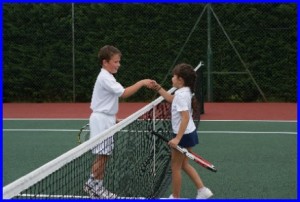Remember that what your children learn outside the classroom is just as important as what they learn inside. Relocation is an excellent time to remember this fact.
When choosing a school, make sure to pay attention to the programs offered in art, music, dance, theater, athletics, and after-school activities. Do any of them seem to exist simply to meet national or other requirements, or have the programs been developed thoughtfully? These programs may go a long way as far as helping your children through the process of settling in their new school, and they will grow in the process.

Do the schools you are looking at offer field-trips for the students? What kinds and how often?
Many schools might be limited in their offerings outside of the classroom. Still, recognizing the importance of this sort of education, there are some easy things you can do with your child that will go a long way:
-Learn folk songs of your new country and teach them to your child. Sing them around the house. Challenge your child to think about them: in what ways are they different from or similar to folk songs from home? Are they in a different language? Do they have a different mood? Can you sing a melody and have your child guess if it sounds like a folk song from home or from your new country?
-Once settled in your new home, don’t rely only on old familiar recipes. Explore, with your child, the cuisine of your new country. What familiar tastes do they use? What tastes are new and surprising? Does the kitchen smell different from how it smelled at home?

-When possible, museum trips, walking tours, etc., are great ways of teaching your children about their new surroundings. These don’t have to be boring for your children. Focus on the things that interest them (the natural history museum isn’t inspirational for everybody!). If your young child is fascinated by fire trucks or playing war, take them to visit the local firehouse or a museum about an important war in your new country’s history. If your child loves animals, take them to the zoo or aquarium can teach them about local species that might not have populated your old home country.

Parents know that activities like these are great for any child, but it’s easy to forget about them during a difficult transition and move. If you can find time to explore them, though, they can go a long way in both easing the transition for your child and teaching them in the process.



 Posted by findingschools
Posted by findingschools 
Report Cards from Around the World: Kathmandu, Nepal
October 9, 2009For the next several weeks, we’ll look at report cards from around the world.
~Fasten Your Seat Belts~
~Second Stop ~ Kathmandu~
.
.
.
Pupil Progress Report Basics
Here’s the report card! The blue circles highlight a few interesting aspects of the report and the numbers correspond to notes below the image.
1. Population and Environment
Some schools offer Population and Environment, a class that may be equivalent to Human Geography (offered as an Advanced Placement class in the American system).
2. Percentage and Position in Class
This student received 70s in her classes (which would be a C average in the United States), however this is considered “Very Good to Excellent” in the Nepali education system. Her high achievement becomes evident in her position in class: 2nd, 3rd or 4th out of 19 students. Speaking of which, the class rank would rarely be reported in most American classrooms, except for the valedictorian at graduation. This illustrates differing values in competition within the educational system.
3. Division
In the Nepali system, students are separated into three divisions, a sort of “streaming.” Here’s a break down of the divisions:
4. Teacher’s Comments… “Try harder and do better”
Unlike the report card from Dalhousie, the Nepali progress report includes teacher’s comments (which covers about 50% of the card). The general theme, even for one of the highest achieving students, seems to be “to do better,” “prove her worth,” and “aspire higher.”
5. “She should shed her over confidence”
This statement clearly demonstrates a cultural difference in the value of confidence versus, perhaps, humility? Has your teacher ever said you were over confident?
See Report Card from Dalhousie, India; Soro, Denmark
Report card analysis to look forward to: Malawi, Australia, Canada, Mexico and more!